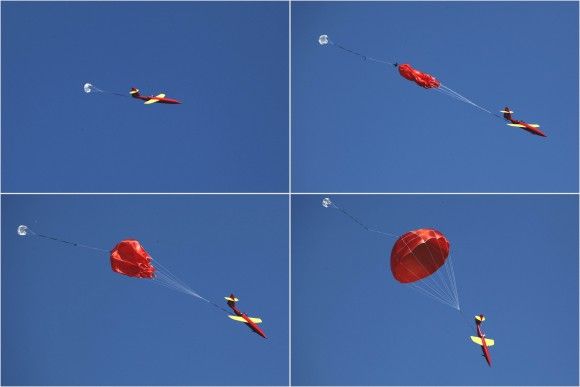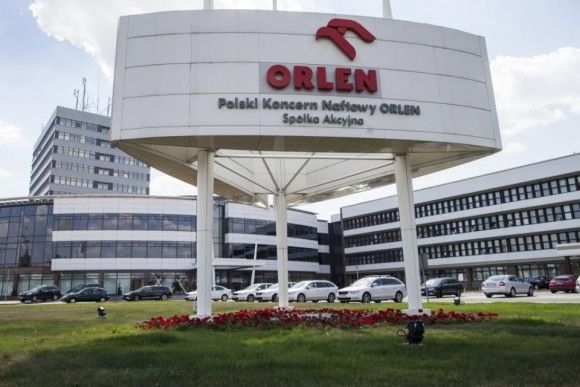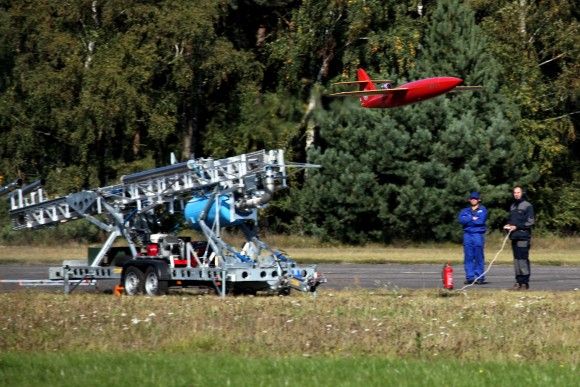IBCS is "a Force Multiplier" for the Air Defence [INTERVIEW]
”With IBCS you are buying one common command and control system and the enterprise it controls.” - stated during interview with Defence24 Tarik M. Reyes, Vice President, Missile Defence & Protective Systems Division, Northrop Grumman and explained: „If you buy multiple missiles, you pay just for the effectors. Even though IBCS is probably the least expensive element of the enterprise, it is the greatest enabler of capability you should invest in.”
Andrzej Hładij, Defence24: Poland is aiming to use the IBCS in its integrated Air Defence System. At the same time, in the Eastern European environment we have here the different systems used by different countries. So how IBCS could be [the] possible integrator of the systems in the future?
Tarik M. Reyes, Vice President, Missile Defence & Protective Systems Division, Northrop Grumman: So I can't speak for the respective countries, but I assume you're referring to the systems that are used by the NATO countries, and some other C2 systems out there owned by NATO. IBCS was envisioned and built to solve this problem. Technically, IBCS is an open architecture system that can integrate multiple sensors, multiple shooters, and multiple C2 systems. What gets integrated and to what degree, remains a government-to-government conversation but it is no longer a technical hurdle with IBCS.
Today we are currently integrating all of the US air and missile defence inventory sensors and shooters. As you know, as part of the Wisła programme we will be integrating some of the domestic indigenous Polish sensors that are being developed now by PIT-RADWAR. In the future, we actually have agreements with other manufacturers of both effectors and sensors to do future development. So even today, in the US inventory, every new sensor that comes online in the US inventory must be compliant with the IBCS interface standard. The same is true for effectors, whether they be kinetic or non-kinetic.
And it is also expected that these sensors and effectors could also be produced in different countries, for example in Poland.
They could be produced as long as it's approved by the US Government. The US Government will determine what sensors and effectors would come onboard. As I said, under phase 2 of the Wisła programme, there is a requirement to integrate the Polish sensors.
One of the most important procurement programs of the US Army is the LTAMDS, the program of the new radar for US Army, and I would like to ask what are the main features of the Northrop Grumman solution in the said program. It's of course interesting for us because it is connected also with Wisla, as the Polish MoD wants to have a similar system like in the US?
Northrop Grumman did receive an award for the lower tier AMD sensor programme for the 360 degree radar. The system is based on our G/ATOR radar that is the current programme of record for the USMC. Northrop Grumman builds the 360 degree radar that is fielded in the US Marine Corps today.
Let us come back to the IBCS system, we know that some testing did take place recently.
Recently we conducted two events called soldier check-out events or SCOEs as they’ve come to be known. The first event was putting this solution in the hands of the US soldiers who were able to operate it and do runs for record to demonstrate its effectiveness and also its stability and capability in a wartime environment. This included dozens of air battles and a 72-hour long endurance run. The second SCOE occurred two weeks ago, and it was conducted in a live air, multi-domain environment. We were able to integrate both marine and air assets to do a similar soldier check-out event. The realistic operational environment also included aspects of electronic warfare. The system performed extremely well. It was very successful. So at this moment in time, with the recent SCOEs as evidence, we are well on track to meet the 2022 time-frame for the US Army.
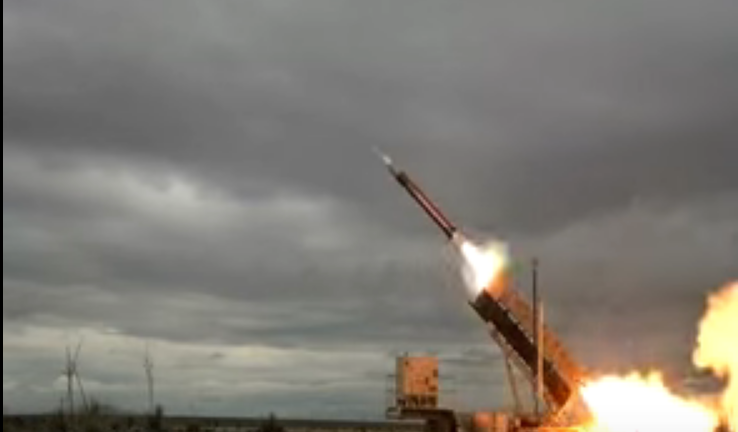
How can IBCS help to intercept targets in highly contested environments. Here in Central Europe we have an environment with probably different kinds of threats, with the ballistic missiles, cruise missiles, manned aircraft, unmanned aircraft, so what is the main feature of IBCS, how it could help to fight against varies threats?
That's one of the driving requirements of IBCS. It has become very difficult to discern the type of threat that may be threatening a defended asset. Combat identification is a huge challenge. As the SCOE we just discussed showed, IBCS makes huge improvements to the situational understanding of the various air threats we face today. That capability is needed to take advantage of another of the huge benefits of IBCS. As I said in the briefing, 30 years ago the threat was limited. One effector per one threat. The Patriot system is a good example of a closed system that can only fire effectors that are directly connected to the same C2 and a single sensor. IBCS was developed to allow the use of information from many sensors across the battlefield not directly connected to each other, let alone to effectors. The IBCS is able to use that significantly enhanced sensor data to determine what is the best effector to use given the type of threat that faces us. You mention the UAV threat is different from a cruise missile. We don’t want to fire a multi-million dollar effector at a 20 thousand dollar UAV but we do want to use it against a highly capable cruise missile that could have something other than high explosives in its warhead.
We had such examples in the last two years that the missile that was worth several million dollars was, take out the UAV which was worth almost nothing.
That's right, so the idea is not to have to fire a PAC-3 missile for every inbound threat. The idea is to use the right effector for the right threat. And the right effector may not always be a kinetic effector. This allows us to get a better balance on the cost curve in trying to keep up with an ever changing threat. With IBCS, you’re buying an enterprise that was designed to morph into the future. When you have a sensor gap, you buy a sensor, not an entire system. When you have an effector gap, you buy an effector, not an entire system. With the ability to see and understand what the threat picture is you are facing, we can now make decisions to use other weapons and not risk getting that decision wrong.
So you may connect the system to different kind of missiles and then you can decide...
You can decide what kind of effect you want to create. Not everything has to be dealt with by putting more metal in the air that eventually has to fall back down to the earth. Different kinds of effects, kinetic and non-kinetic are now capable of being brought together under that same common C2 system that can use them in an effective and optimal way. And that's the value of the IBCS. From an economic standpoint, IBCS is multi-domain and multi-role. A warfighter can use IBCS for a mid-range AD, for SHORAD, or a warfighter can start to connect various nodes of the network to be the force multiplier. When you buy a Patriot battery which includes multiple C2 systems, a radar, communications systems, and multiple launchers for the interceptors. Each time you need to provide more coverage or address another emerging threat, you have to buy another battery which comes with all those items again. Ultimately the cost is just a multiple of the number of batteries you choose to buy. And you have to buy a whole lot more than what you really need. With IBCS you are buying one common command and control system and the enterprise it controls. If you buy multiple missiles, you pay just for the effectors. Even though IBCS is probably the least expensive element of the enterprise, it is the greatest enabler of capability you should invest in.
But it is crucial to have low cost of operating of the effectors that you have. I mean from one point you said the IBCS is the least expensive part of the entire system. But on the other hand it is crucial to give the whole system the low-cost basis.
That's right, it's the glue in the brains that keeps it all together. So without it you're buying single systems that can essentially only create one effect. You have a 20 thousand dollar UAV, it's going to cost millions of dollars to shoot it down, you have no choice other than to use that expensive effector when you buy a closed system. As I said, the IBCS allows you to scale to your specific needs.
What countries are interested in the IBCS? We are talking of course about the US, of course Poland is interested, but do you have any other countries which are now interested?
We are fielding queries from a number of countries in Asia, Middle East, and Europe that are interested in advanced IAMD. Poland is the first country that will receive IBCS in line with the US Army. That's a big event. As the US Army is fielded with the IBCS, Poland will be hand in hand with the US Army, fielding IBCS as well.
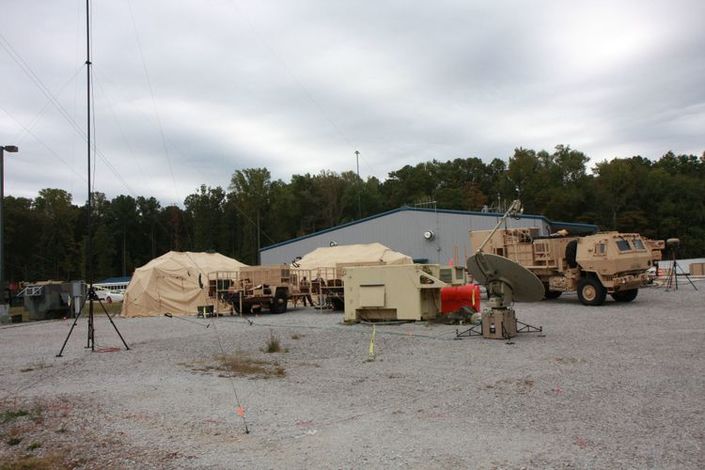
Do you see the possibility to integrate the IBCS with the Naval environment?
Technically IBCS is built and was designed to be able to be integrated with maritime as well as other ground and air assets. As multi-domain warfare and coalition warfare continues to mature, I can see a future where the policies and governance issues will be eased that currently restrict some of the integration we can do to leverage the technologies created via IBCS.
What in your opinion will be the main advantages of the purchase of the IBCS together with Patriots in Poland.?
IBCS is a revolutionary command-and-control (C2) system representing a paradigm shift in joint and coalition integrated air and missile defense, warfighter capability and buying power. In a dynamic and changing environment, taking advantage of the open, non-proprietary nature of the IAMD enterprise allows for the addition of capabilities not previously planned at a much reduced cost. I think by making a decision to have the IBCS as part of the acquisition creates a force multiplier for you that will enabled Poland to be able to defend itself against a very very sophisticated and complex threat. Not only what's here today but also coming up in the future.
Thank you for the interview.
